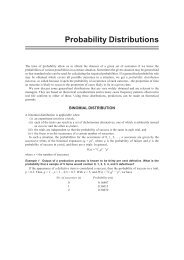International-Business-Dr-R-Chandran-E-book
International-Business-Dr-R-Chandran-E-book
International-Business-Dr-R-Chandran-E-book
You also want an ePaper? Increase the reach of your titles
YUMPU automatically turns print PDFs into web optimized ePapers that Google loves.
B) On the basis of quantification of tariffs<br />
192<br />
<strong>International</strong> <strong>Business</strong>- <strong>Dr</strong>. R. <strong>Chandran</strong><br />
1. Specific duty: A specific duty is a flat sum collected on physical unit of<br />
the commodity imported. Here, the rate of the duty is fixed and is<br />
collected on each unit imported. For example, Rs. 800 on each TV set or<br />
washing machine or Rs. 3000 per metric ton on cold rolled steel coils.<br />
2. Ad-valorem duty: This duty is imposed at a fixed percentage on the value<br />
of a commodity imported. Here the value of the commodity on the<br />
invoice is taken as the base for calculation of the duty, e.g., 3% advalorem<br />
duty on the C&F value of the goods imported. In the ad-valorem<br />
duty, the percentage of the duty is decided but the actual amount of the<br />
duty changes as per the FOB value of a product.<br />
3. Compound duty: A tariff is referred to as compound duty when the<br />
commodity is subject to both specific and ad-valorem duty.<br />
C) On the basis of the purpose they serve<br />
1. Revenue tariff: It aims at collecting substantial revenue for the<br />
government, but does not really obstruct the flow of imported goods.<br />
Here, the duty is imposed on items of mass consumption, but the rate of<br />
duty is low.<br />
2. Protective tariff: Protective tariff aims at giving protection to home<br />
industries by restricting or eliminating competition. Protective tariffs are<br />
usually high so as to reduce imports. However, if the protective duties are<br />
too high, it may hurt consumers, as imports will stop, leading to<br />
shortages in the consumer market.<br />
3. Anti-dumping duty: Dumping is the commercial practice of selling goods<br />
in foreign markets at a price below their normal cost or even below their<br />
marginal cost so as to capture foreign markets. Many countries follow<br />
dumping practices. It is international practice which has a “do or die”<br />
instinct associated with the company’s policy. It is harmful to less<br />
developed countries where the cost of production is high.<br />
4. Countervailing duty: Such duties are similar to anti-dumping duties but<br />
are not so severe. Countervailing duties are imposed to nullify the<br />
benefits offered, through cash assistance or subsidies, by the foreign<br />
country to its manufacturers. The rate of such duty will be proportional to<br />
the extent of cash assistance or subsidy granted.<br />
Only for Private Circulation





